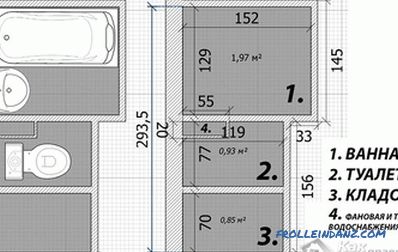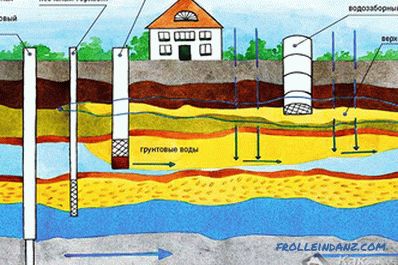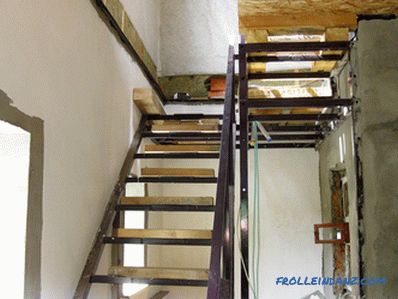Due to its positive qualities, alabaster is widely used in the construction industry. However, when applying it, it is important to be careful, because after the contact of the dry powder with water, it hardens very quickly. It is this property of alabaster that made it so popular. Therefore, it is used in cases where it is necessary to carry out work quickly and without loss of quality, for example, when laying wires. In this article, we invite you to get acquainted with how to dilute alabaster.
Specifications
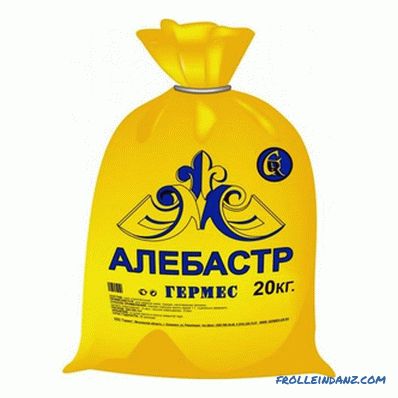
This material has the following properties:
- durability;
- when applying the mixture is formed smooth surface;
- strength;
- waterproof;
- crack resistance;
- high degree of sound insulation.
Advantages and disadvantages of
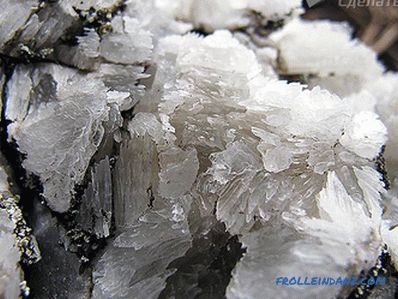
Among the positive sides of alabaster, the following can be identified:
- Set quickness. With some works it is very important.
- Fire resistance.
- When freezing does not shrink.
- Not dangerous for the human body.
- Ability to withstand loads.
Considering the fact that alabaster absorbs moisture, it is not recommended to use it in a room with high humidity.
Among the minuses can be identified poor resistance to dry and humid air. In the absence of moisture, alabaster loses its technical properties and simply crumbles.
Compliance with proportions is an important factor

As for the proportions, they are prescribed by building codes and regulations. For example, according to SNIP, they are expressed as follows: 650 ml of water or lime mortar should be consumed per 1 kg of dry mixture. For fixing the wire during electrical work on 1 kg there is 500 ml of water. If it is necessary to obtain a liquid mixture of alabaster, then the proportion is 1: 1.
Choosing utensils for kneading
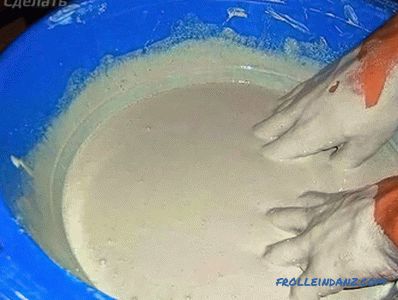
Unlike other solutions, for example, putty, alabaster dries very quickly. For this reason, you need to seriously approach the choice of dishes for kneading alabaster dough. Using a metal bowl or bucket is not recommended. In this case, it will be difficult for you to remove residues from their surface. Therefore, it is best to dilute the solution in a rubber or plastic container. Removed dried alabaster by compressing the dishes.
If it is necessary to knead a small portion and once, then in any convenient container, place a plastic bag. The film is securely fixed at the edges. Upon completion, the film is removed.
As an option, you can do the kneading in the old rubber ball. To do this, cut it and do the dough in the inside. You can also cut a plastic bottle (1.5 or 2 liters) along.
Preparation of alabaster dough

Construction alabaster is prepared in different proportions, in relation to water, based on the purpose of its use. So, if you want to align the walls or partitions, the mixture is kneaded 1: 1. To install junction boxes, a viscous mass of 2: 1 is required.
If in the process of work alabaster began to harden, then do not try to add water to it. It should be thrown away immediately.
The mixing process itself comes down to adding the dry mixture to water, but not vice versa. The process of adding powder should be gradual. Otherwise there is a risk that the whole mass will take a lump that can not be broken. As an option for mixing, you can use a drill with a mixer nozzle. In this case, you can make a batch without a single lump.
By consistency, alabaster should resemble thick sour cream. To all the components of the mixture entered into the reaction, it is enough to wait half a minute. After that, you can cover up the gap or perform other actions. All work must be carried out quickly and at the same time carefully.
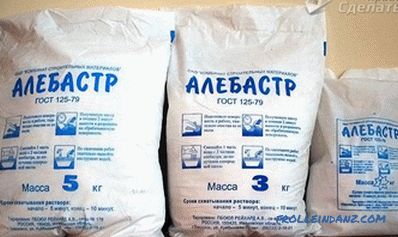 Alabaster
Alabaster
After completing the work, it is important to thoroughly rinse the entire instrument in warm water. .
When mixing, use only cold water at room temperature. Hot water accelerates the process of setting several times.
So, we have reviewed with you the features of alabaster for walls, as well as the technique of mixing it. Observing all the above recommendations, we hope that you can make the correct batch of alabaster.
Video
How to make alabaster more plastic will be discussed in the video:

